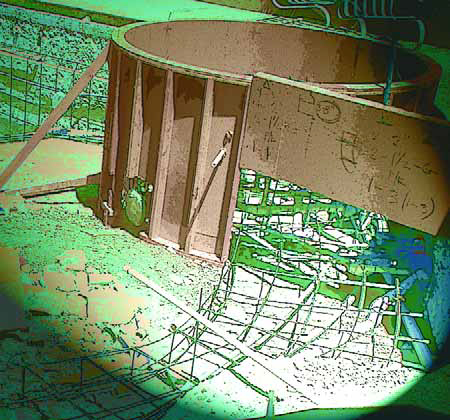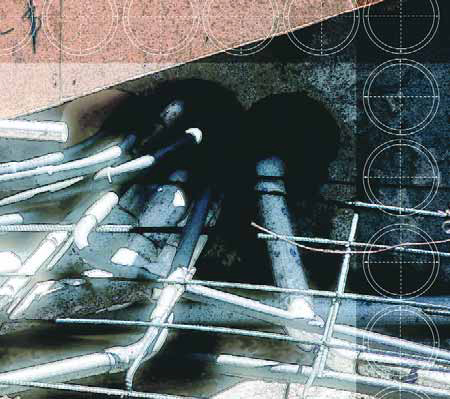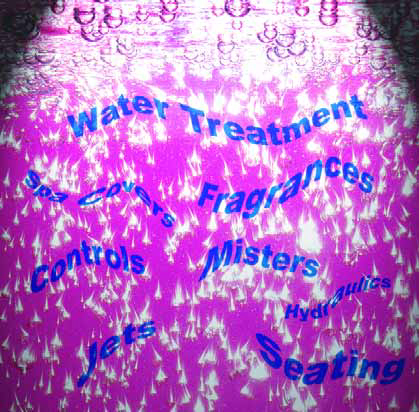spa design
It's not too unusual to replace all of the plumbing, equipment and electrical lines as part of a swimming pool renovation project. It's quite another story, however, when you need to make sure all of it happens without disrupting the deck surrounding the vessel. As mentioned in my last two "Details," that's precisely what we've been asked to do in renovating a 70-year-old pool in the historic Los Feliz neighborhood of Los Angeles. The presence of a beautiful, valuable, imported limestone deck means that we've had to do all of our work from inside
One of the real tricks in any art form can be the challenge of exercising restraint. Bigger isn't always better, and both scale and size do matter. In other words, just because you can create something grand, it doesn't always mean that you should. This principle of proportionality has a sharp, specific meaning in the world of the custom watershaper, especially when clients ask for something that is oversized for the property or more elaborate than called for by the setting or surrounding architecture. We all know where it comes from: Clients have seen something they like, and it
If the art of watershaping is ultimately about visuals, then creating a situation for yourself in which you're virtually guaranteed to create visual disruptions is something you certainly do not want to do. That's the situation I currently face in the renovation of a pool at a stunning, 1920s-vintage home in the heart of Los Angeles. As I indicated in my last column, it's a remarkably beautiful setting that features a 70-year-old pool that was well designed, expertly installed, well worth keeping - and surrounded by
Last time, we began a discussion of giving our clients the satisfying hot-water experience they crave with a review of basic design principles and coverage of a range of materials-selection issues. Translating the good on-site positioning and great materials we surveyed in February into a luxurious spa experience requires the designer to have an advanced understanding of the technology at work in hydrotherapy as well as a grasp of the spectrum of options available to drive and control hot-water systems. Before we address those key topics, however, it bears
Since time immemorial, humans have sought out warm water for purposes of pleasure, bathing, relaxation and healing. That's a great thing for modern watershapers, almost all of whom are steadily asked to design swimming pools with attached spas or to set up stand-alone inground spas or to find ways to make portable spas work as part of a landscape or deck setting. I'd argue that hot water is even more important to contemporary lifestyles than it was to the Assyrians, Greeks or Romans of antiquity, given the stresses of modern life and the fact that we seem to have more of the leisure time required to enjoy a
To my way of thinking, even a so-called average swimming pool is a wonderful thing. It's a product we place in a backyard for the long haul, a product that provides an ongoing recreational experience, operates reliably, enhances lifestyles and adds to property values while offering quality family benefits. With that in mind, I firmly believe that we as an industry must collectively make the decision that there's no place for second-rate construction. "Bargain construction" doesn't work in our industry simply because of the
A grand California estate deserves a grand pool, and Cima del Mundo is certainly no exception. The new pool is part of a project that involves the complete renovation of a classic estate in the hills of Montecito, a prosperous enclave just south of Santa Barbara, Calif. In keeping with the overall theme of the project, which was described in detail in "The Crest of the World" (WaterShapes, January/February 2001, page 32), the pool has been outfitted with thoroughly
Increasing numbers of our clients are asking for more from their watershapes - so many, in fact, that we're seeing an unprecedented blurring of the lines between swimming pools, spas and the full range of decorative waterfeatures. This demand is particularly strong in one area: In addition to projects that are functional, our clients want them to be visually compelling as well. This need has inspired designers at our firm (and elsewhere) to new levels of creativity. In certain instances, we at Leisure Living Pools in Frisco, Texas, have answered the call with spa designs that
Lately I've been finding myself in what seems like a fairly unique position: On the one hand, I work as a design consultant for architects and as a designer for high-end customers; on the other, I work as a builder executing the designs that customers and their architects choose. In this dual capacity, I've been able to gather a tremendous amount of input from construction clients and transfer it in one form or another as a consultant. I also have had the opportunity of seeing how decisions made in the design process play out during the construction process. Seeing both sides has led me to certain conclusions, chief among them
I'm amazed at how few watershapers keep the size and shape of the average body in mind or consider the science of ergonomics when they design projects for their clients. Just think about how much more we can do to increase their comfort and enjoyment by doing so, particularly when it comes to custom concrete spas. Take a look at the average spa attached to the typical pool: On a great many of them, you'll see a cantilevered deck around the edges. From the perspective of






















